Abstract
When Esherichia coli cells are exposed to a low level of simple alkylating agents, they induce the adaptive response which renders them more resistant to the killing and the mutagenic effects of the same or other alkylating agents. This paper describes the isolation of one strain that was deficient in mutagenic adaptation and five that were deficient in both mutagenic and killing adaptation, confirming previous suggestions that killing and mutagenic adaptation are, at least to some extent, separable. These six strains have been called Ada mutants. They were more sensitive to the killing and mutagenic effects of N-methy-N'-nitro-N-nitrosoguanidine (MNNG) than the unadapted Ada+ parent. Thus, the adaptation pathway is responsible for circumventing some alkylation-induced damage even in cells that are preinduced. The increase in mutation frequency seen in Ada cells treated with MNNG was the same whether the cells were lexA+ or lexA, showing that the extra mutations found in Ada- strains do not depend upon the SOS pathway. Ada strains accumulated more O6-methyl guanine lesions than the Ada+ parent on prolonged exposure to MNNG, and this supports the idea that O6-methyl guanine is the most important lesion for MNNG-induced mutagenesis. The ada mutations have been shown to map in the 47 to 53-min region of the E. coli chromosome.
Full text
PDF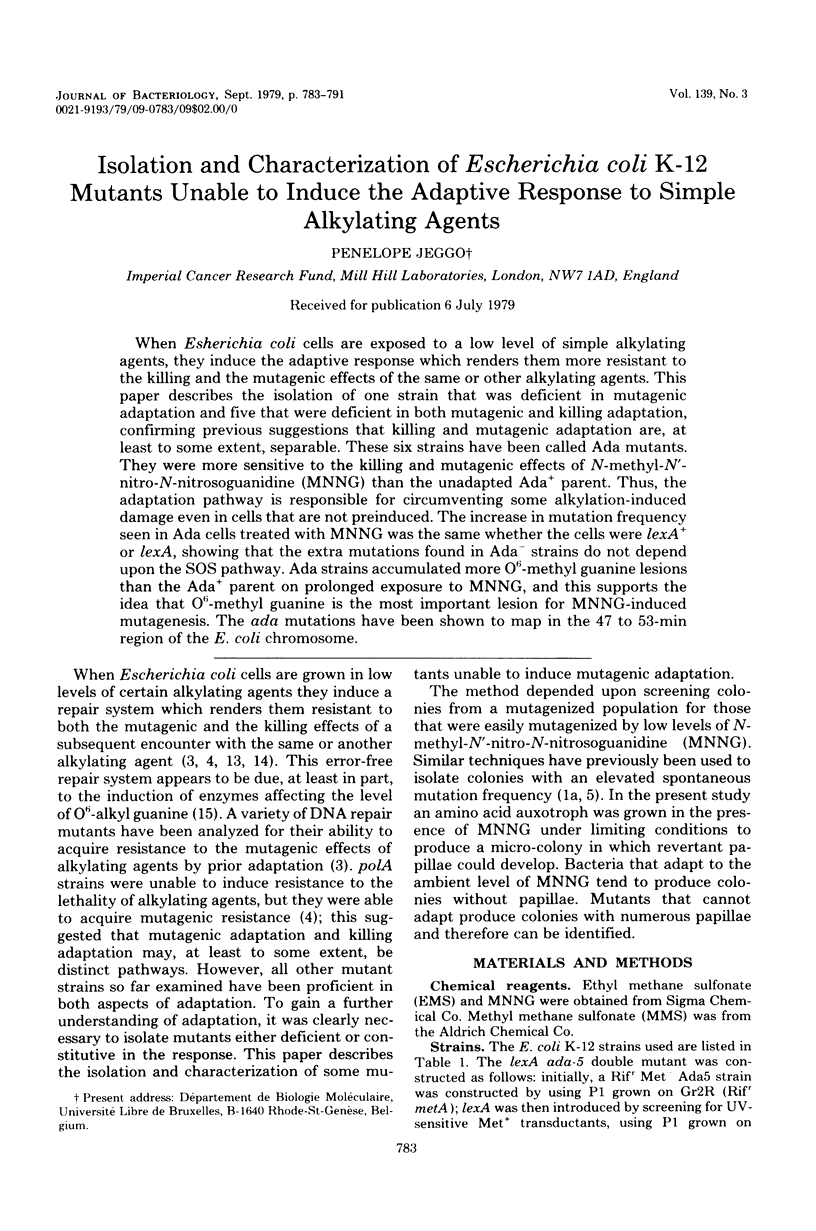
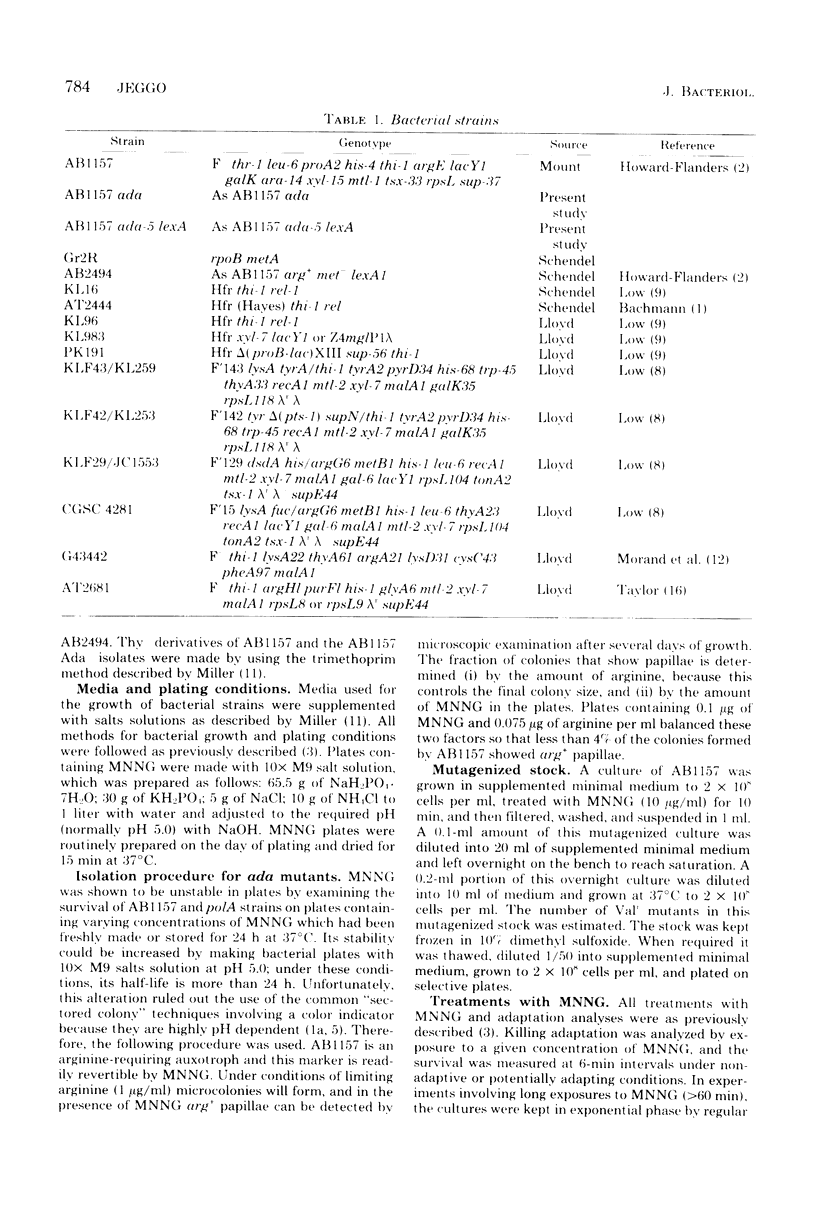
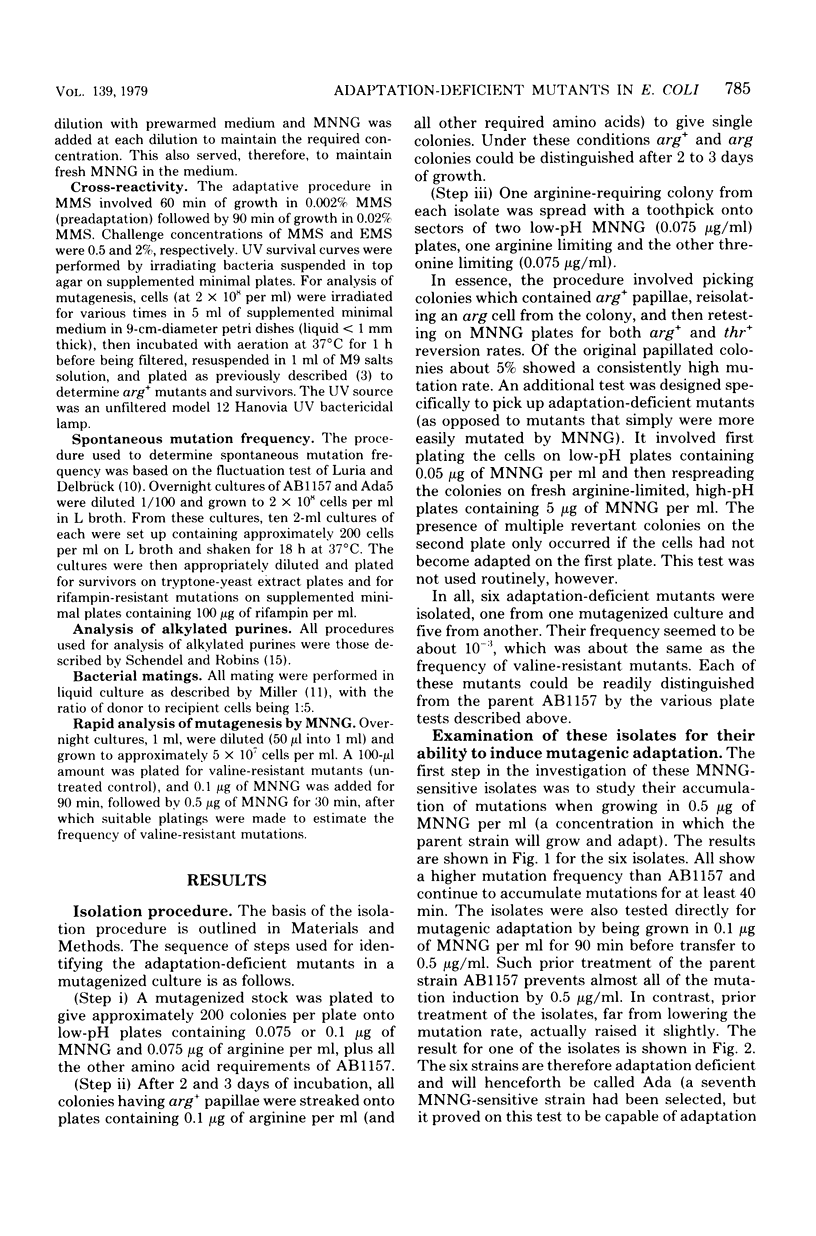
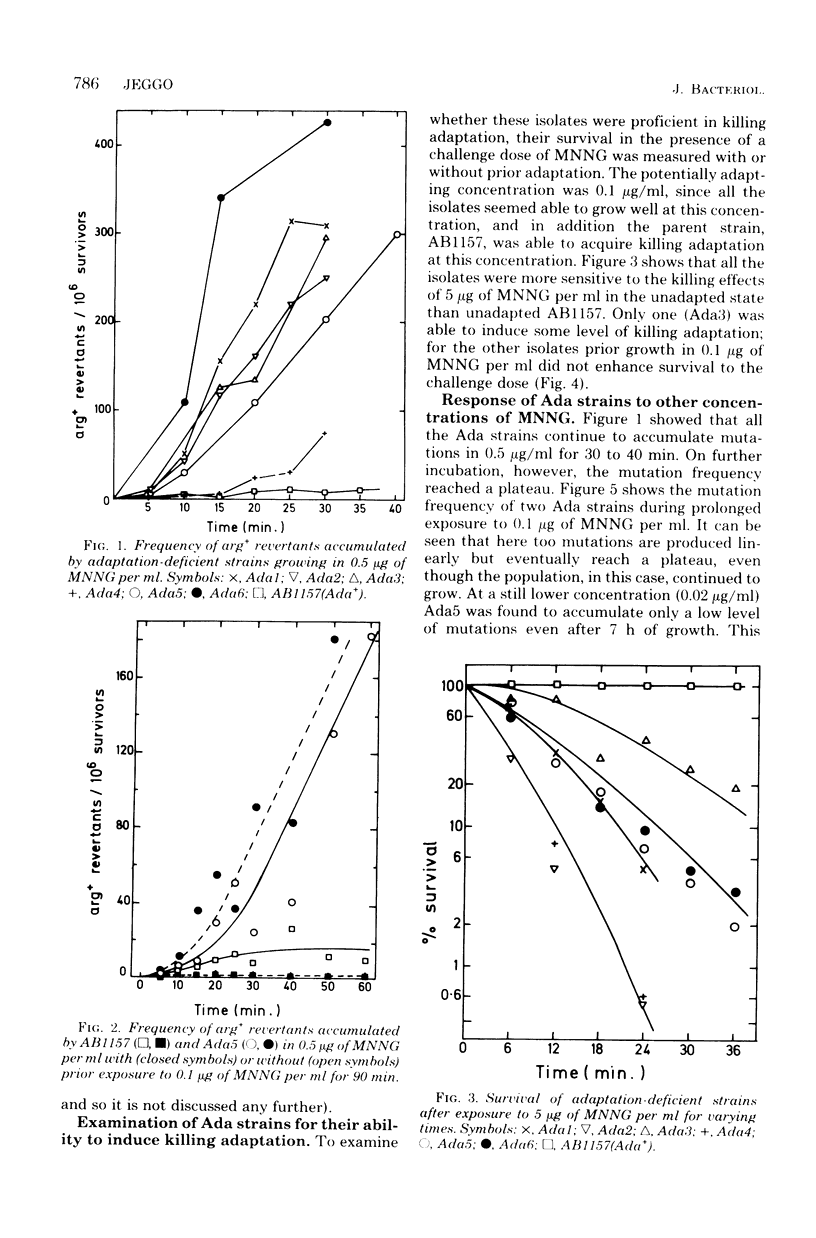
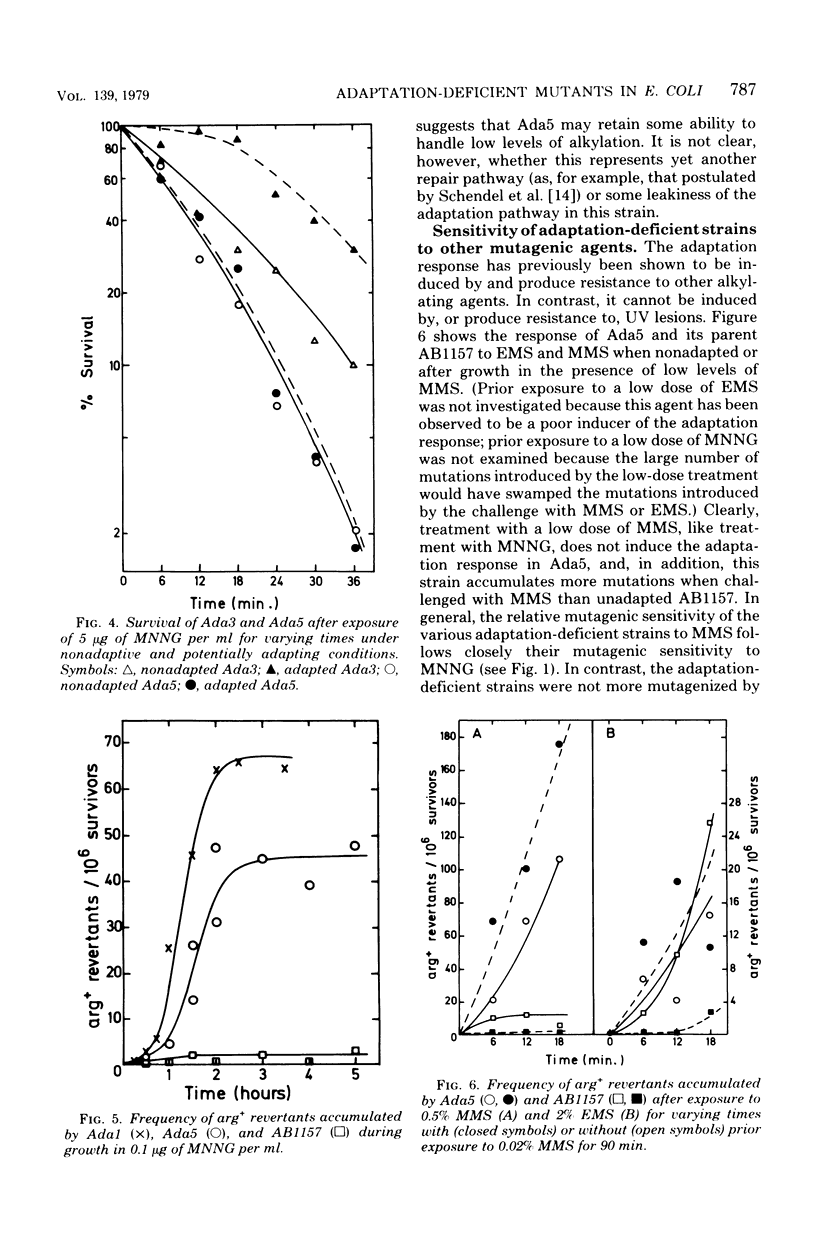
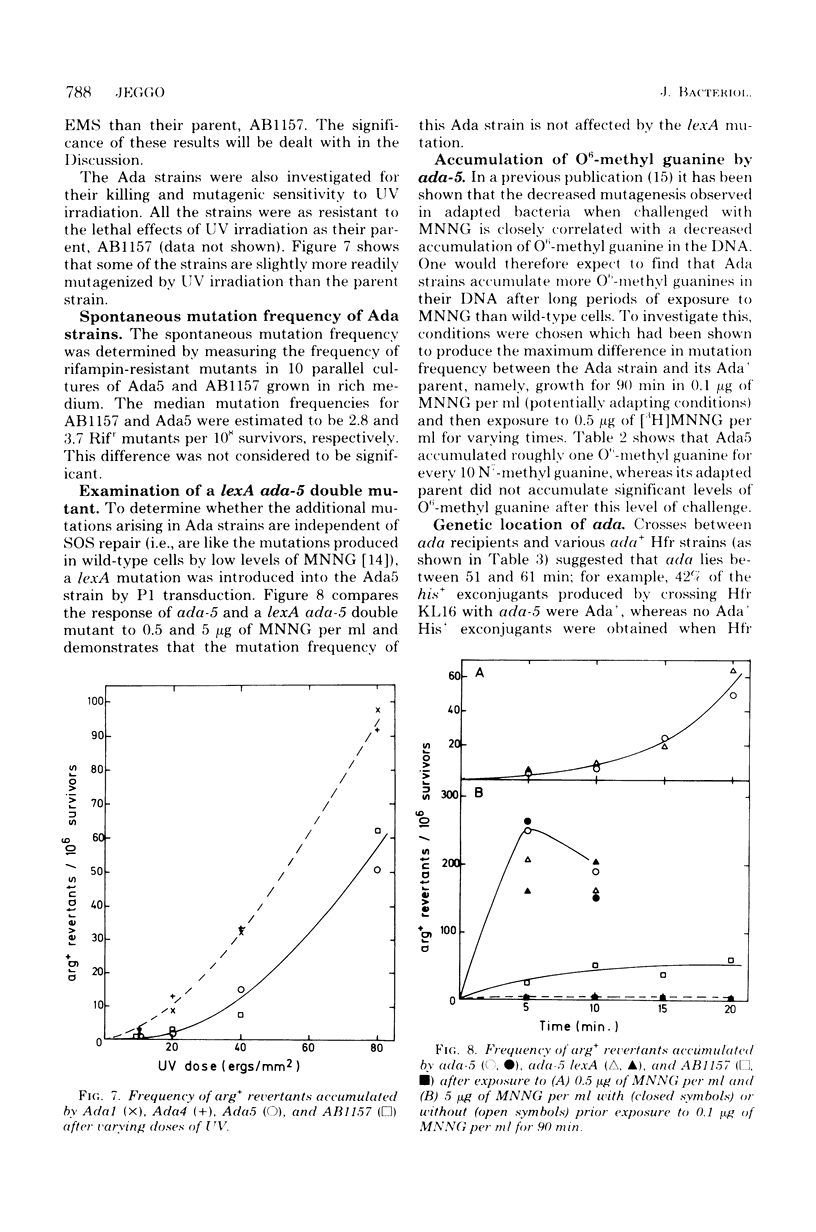
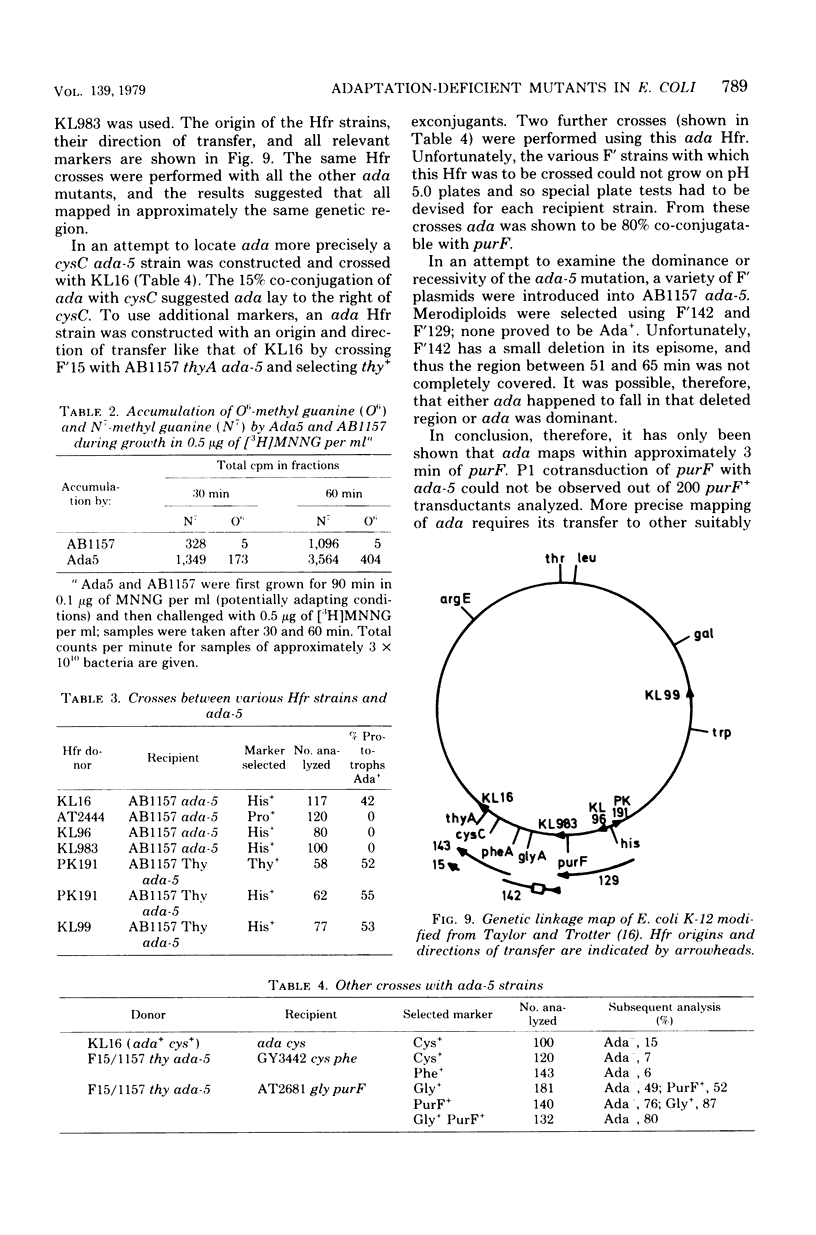
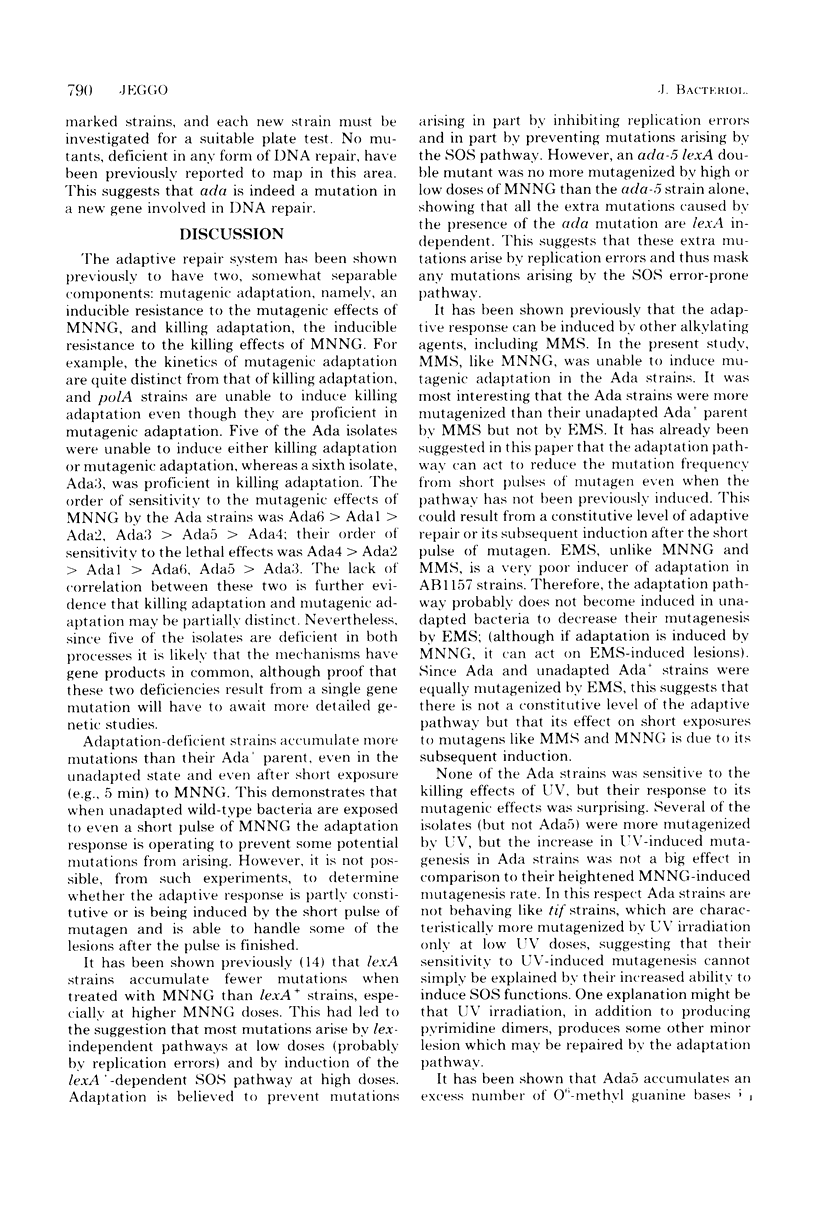
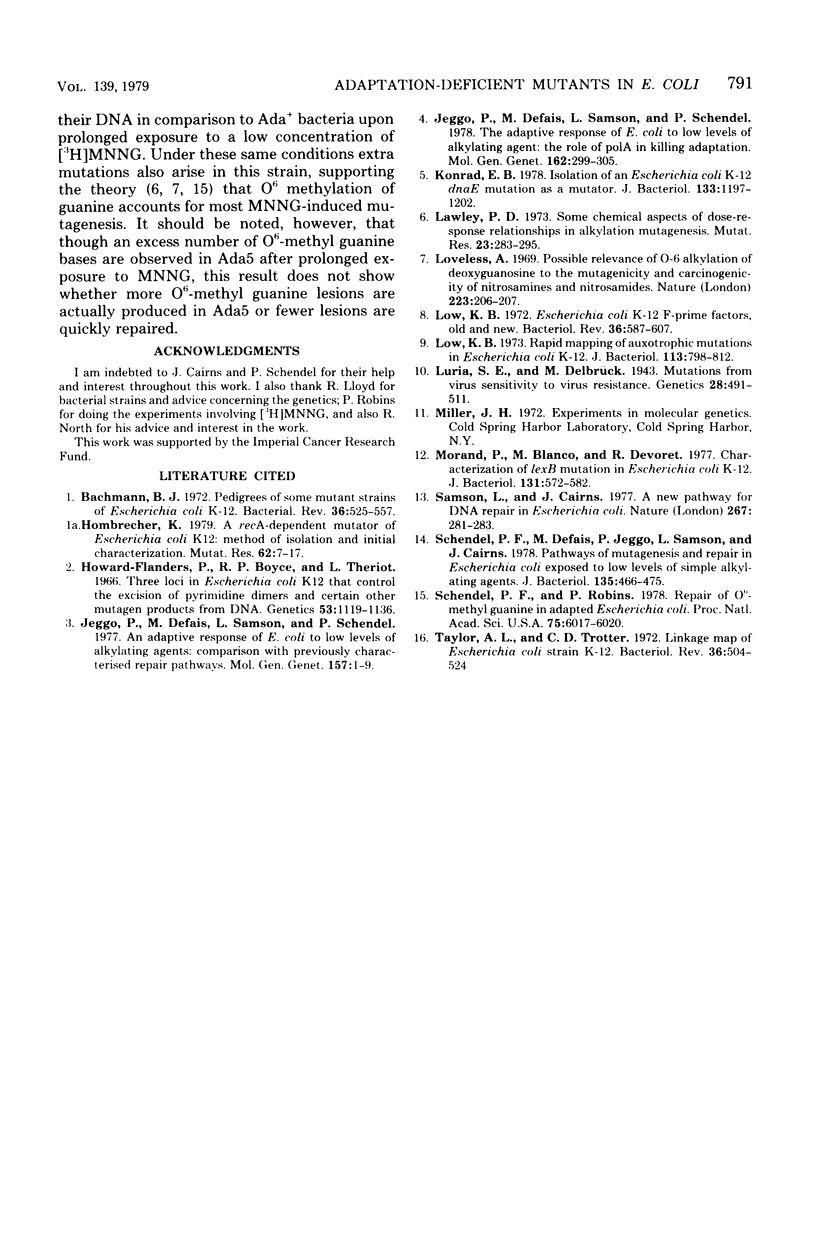
Selected References
These references are in PubMed. This may not be the complete list of references from this article.
- Bachmann B. J. Pedigrees of some mutant strains of Escherichia coli K-12. Bacteriol Rev. 1972 Dec;36(4):525–557. doi: 10.1128/br.36.4.525-557.1972. [DOI] [PMC free article] [PubMed] [Google Scholar]
- Hombrecher G., Vielmetter W. A recA-dependent mutator of Escherichia coli K12: method of isolation and initial characterization. Mutat Res. 1979 Aug;62(1):7–17. doi: 10.1016/0027-5107(79)90218-5. [DOI] [PubMed] [Google Scholar]
- Howard-Flanders P., Boyce R. P., Theriot L. Three loci in Escherichia coli K-12 that control the excision of pyrimidine dimers and certain other mutagen products from DNA. Genetics. 1966 Jun;53(6):1119–1136. doi: 10.1093/genetics/53.6.1119. [DOI] [PMC free article] [PubMed] [Google Scholar]
- Jeggo P., Defais M., Samson L., Schendel P. The adaptive response of E.coli to low levels of alkylating agent: the role of polA in killing adaptation. Mol Gen Genet. 1978 Jul 4;162(3):299–305. doi: 10.1007/BF00268855. [DOI] [PubMed] [Google Scholar]
- Jeggo P., Defais T. M., Samson L., Schendel P. An adaptive response of E. coli to low levels of alkylating agent: comparison with previously characterised DNA repair pathways. Mol Gen Genet. 1977 Nov 29;157(1):1–9. doi: 10.1007/BF00268680. [DOI] [PubMed] [Google Scholar]
- Konrad E. B. Isolation of an Escherichia coli K-12 dnaE mutation as a mutator. J Bacteriol. 1978 Mar;133(3):1197–1202. doi: 10.1128/jb.133.3.1197-1202.1978. [DOI] [PMC free article] [PubMed] [Google Scholar]
- Lawley P. D. Some chemical aspects of dose-response relationships in alkylation mutagenesis. Mutat Res. 1974 Jun;23(3):283–295. doi: 10.1016/0027-5107(74)90102-x. [DOI] [PubMed] [Google Scholar]
- Loveless A. Possible relevance of O-6 alkylation of deoxyguanosine to the mutagenicity and carcinogenicity of nitrosamines and nitrosamides. Nature. 1969 Jul 12;223(5202):206–207. doi: 10.1038/223206a0. [DOI] [PubMed] [Google Scholar]
- Low B. Rapid mapping of conditional and auxotrophic mutations in Escherichia coli K-12. J Bacteriol. 1973 Feb;113(2):798–812. doi: 10.1128/jb.113.2.798-812.1973. [DOI] [PMC free article] [PubMed] [Google Scholar]
- Low K. B. Escherichia coli K-12 F-prime factors, old and new. Bacteriol Rev. 1972 Dec;36(4):587–607. doi: 10.1128/br.36.4.587-607.1972. [DOI] [PMC free article] [PubMed] [Google Scholar]
- Luria S. E., Delbrück M. Mutations of Bacteria from Virus Sensitivity to Virus Resistance. Genetics. 1943 Nov;28(6):491–511. doi: 10.1093/genetics/28.6.491. [DOI] [PMC free article] [PubMed] [Google Scholar]
- Morand P., Blanco M., Devoret R. Characterization of lexB mutations in Escherichia coli K-12. J Bacteriol. 1977 Aug;131(2):572–582. doi: 10.1128/jb.131.2.572-582.1977. [DOI] [PMC free article] [PubMed] [Google Scholar]
- Samson L., Cairns J. A new pathway for DNA repair in Escherichia coli. Nature. 1977 May 19;267(5608):281–283. doi: 10.1038/267281a0. [DOI] [PubMed] [Google Scholar]
- Schendel P. F., Defais M., Jeggo P., Samson L., Cairns J. Pathways of mutagenesis and repair in Escherichia coli exposed to low levels of simple alkylating agents. J Bacteriol. 1978 Aug;135(2):466–475. doi: 10.1128/jb.135.2.466-475.1978. [DOI] [PMC free article] [PubMed] [Google Scholar]
- Schendel P. F., Robins P. E. Repair of O6-methylguanine in adapted Escherichia coli. Proc Natl Acad Sci U S A. 1978 Dec;75(12):6017–6020. doi: 10.1073/pnas.75.12.6017. [DOI] [PMC free article] [PubMed] [Google Scholar]
- Taylor A. L., Trotter C. D. Linkage map of Escherichia coli strain K-12. Bacteriol Rev. 1972 Dec;36(4):504–524. doi: 10.1128/br.36.4.504-524.1972. [DOI] [PMC free article] [PubMed] [Google Scholar]


